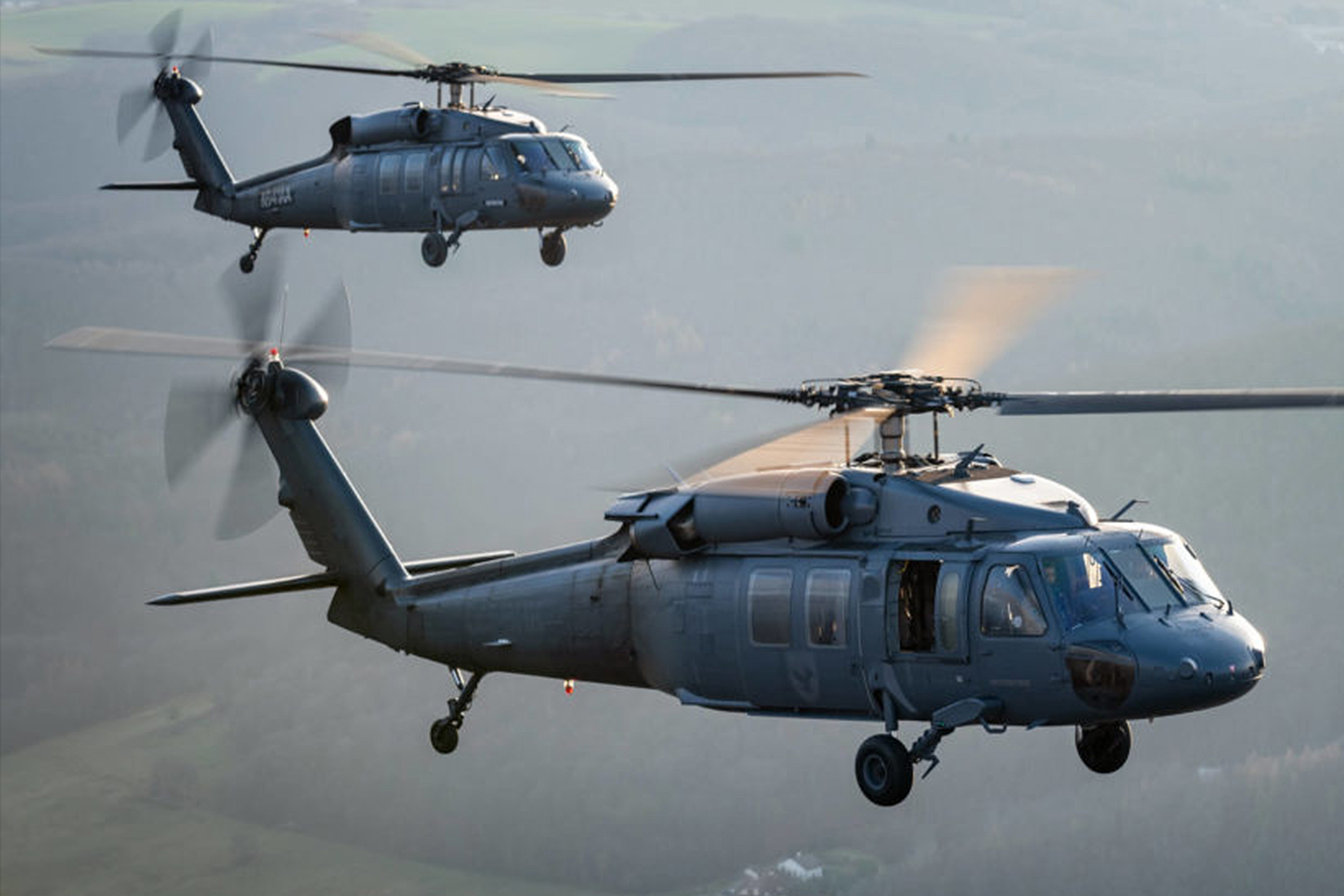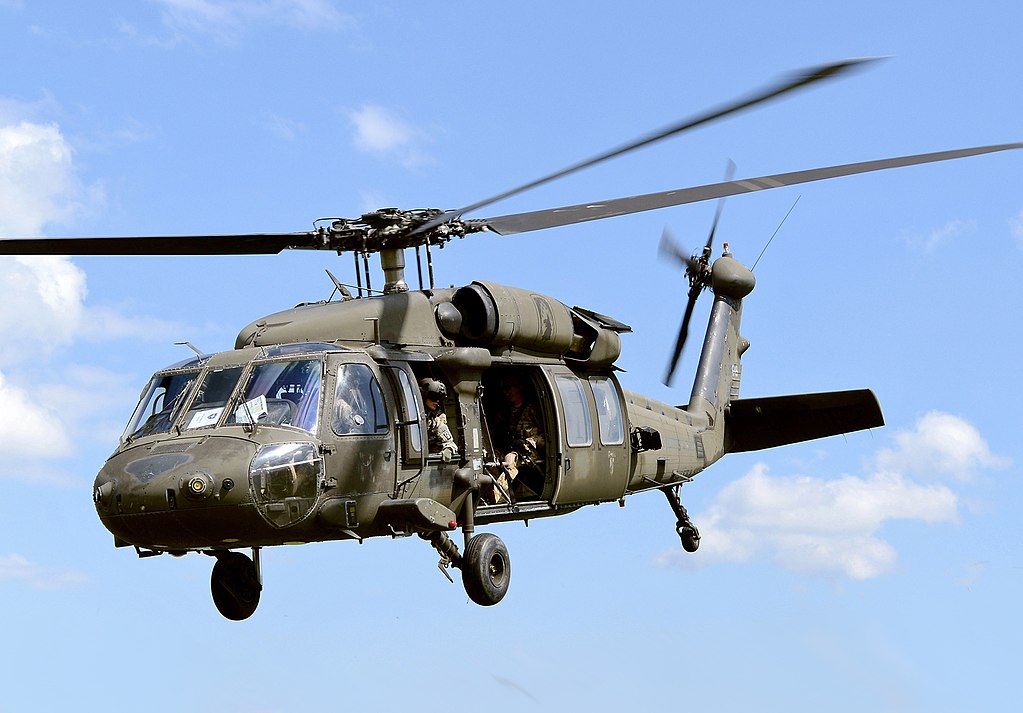The Future of the UH 60: Technologies and Upgrades for Improved Efficiency
The Future of the UH 60: Technologies and Upgrades for Improved Efficiency
Blog Article
Crucial Truths and Insights Concerning the UH-60 Helicopter
The UH-60 helicopter, a foundation of modern army aeronautics, has actually evolved dramatically since its introduction in 1979. Popular for its convenience, it includes an innovative layout that fits numerous functional demands, from army transportation to medical emptying. Its innovative avionics and durable building and construction enhance both performance and security in varied settings. Nonetheless, the ramifications of its style selections and functional capabilities extend past the battleground, influencing altruistic objectives worldwide. Recognizing the ins and outs of the UH-60's duty exposes an intricate narrative of development and adjustment that advantages better expedition.
Background of the UH-60
The UH-60 Black Hawk helicopter was established in the late 1970s as component of the USA Military's initiative to change the older UH-1 Iroquois. The demand for a much more flexible, resilient, and capable airplane developed from the lessons found out throughout the Vietnam War, where the limitations of the UH-1 came to be evident. In 1972, the Military launched a program to obtain a new energy helicopter, culminating in a competitive design stage that saw a number of makers submit propositions.
Sikorsky Aircraft was eventually awarded the agreement in 1976, and the first model of the Black Hawk flew in 1974. Its design concentrated on sophisticated modern technology, consisting of a four-blade rotor system and a modular building and construction that enabled rapid area upkeep and flexibility to different goals. Officially getting in service in 1979, the UH-60 rapidly ended up being the foundation of Army aeronautics, serving in a multitude of duties such as troop transportation, medevac, and logistical support.
For many years, the Black Hawk has gone through numerous upgrades and adjustments, strengthening its status as an essential possession in army procedures around the globe (UH 60). Its robust efficiency continues to satisfy the evolving needs of modern warfare
Design and Features
Incorporating advanced engineering principles, the UH-60 Black Hawk features a smooth, wind resistant layout that enhances its performance and efficiency. This twin-engine utility helicopter is defined by its unique silhouette, with a high-mounted, four-blade primary blades system that gives extraordinary lift and security. The rotor blades are built from composite materials, adding to their sturdiness and decreasing upkeep requirements.
The fuselage is created for ideal weight circulation and architectural integrity, enabling a maximum gross weight of approximately 22,000 pounds. The cabin format assists in versatile setups, fitting different objectives, from troop transport to medevac operations. Furthermore, the cabin is furnished with advanced avionics, consisting of electronic screens and multi-functional systems that enhance situational awareness.
The UH-60 also integrates composite materials in its airframe, which reduce radar cross-section and improve survivability in hostile settings. Its retracting landing gear streamlines the airplane's account, additional adding to its aerodynamic efficiency. On the whole, the thoughtful combination of design components and products not only improves the Black Hawk's functional abilities but also guarantees that it remains a vital property for missions throughout diverse surfaces and problems.
Operational Abilities


The UH-60 is equipped with advanced avionics and navigating systems, promoting procedures in difficult weather condition conditions and reduced exposure situations. Its robust style enables it to carry out in high-altitude and extreme temperature problems, better extending its operational range. The helicopter's twin-engine arrangement gives redundancy and boosted efficiency, making sure reliability during vital goals.
Outfitted with innovative communication systems, the Black Hawk enhances situational understanding and control amongst military units. In addition, its capability to conduct aerial reconnaissance and assistance close air assistance goals emphasizes its essential role on the combat zone. In general, the UH-60 Black Hawk's operational capacities are a testament to its value in contemporary military air travel, efficiently fulfilling the demands of a swiftly developing functional landscape.

Variants and Adjustments
Various versions and modifications of the UH-60 Black Hawk have actually been created to satisfy certain objective requirements and enhance its operational flexibility. The most notable version is the UH-60L, which presented upgraded engines, boosted avionics, and boosted freight capability. Additionally, the UH-60M alternative attributes advanced digital avionics, a more effective engine, and enhanced survivability systems, making it suitable for a wider selection of objectives.
The HH-60G Pave Hawk is another specialized version, created for search and rescue operations. It is equipped with innovative navigating systems, external useful site gas storage tanks, and medical discharge abilities. The MH-60R Seahawk is optimized for anti-submarine warfare and maritime operations, flaunting sophisticated radar and sonar systems.
Furthermore, the armed versions, such as the AH-60, are modified for straight strike functions, featuring tool systems like rockets and gatling gun. The UH-60's adaptability is more showcased in its ability to be fitted with mission-specific devices, including cargo hooks for transportation, troop transport interiors, and reconnaissance sensing units.
These variants and adjustments emphasize the Black Hawk's important duty in contemporary army operations, showcasing its ability to adjust to evolving mission needs.
Duty in Humanitarian Initiatives
The UH-60 Black Hawk has actually stepped up to play an essential duty in humanitarian efforts around the world, showing its flexibility past army applications. This multi-mission helicopter is geared up to perform a variety of missions, including medical discharges, disaster relief, and logistical support in difficult settings.
Throughout all-natural disasters, such as quakes and storms, the Black Hawk has actually verified important for carrying alleviation products and employees to influenced locations. Its ability to operate in ascetic problems permits it to reach remote locations that may be hard to reach by ground transport, ensuring timely support to those in need.
Furthermore, the UH-60 is usually utilized for clinical discharge goals, swiftly transferring damaged people to clinical facilities. Its sophisticated clinical abilities, consisting of room for clinical employees and tools, make it possible for life-saving interventions throughout essential scenarios.
In global procedures, the Black Hawk often collaborates with humanitarian organizations, showcasing its adaptability and integrity. By leveraging its capacities, the UH-60 not just supports army objectives but additionally plays an essential duty in conserving lives and relieving suffering during humanitarian situations worldwide.
Final Thought
The UH-60 helicopter has developed itself as a critical property in armed forces operations given that its introduction, characterized by its durable website here layout and flexible capabilities. Its numerous setups deal with a variety of goals, from troop transport to clinical evacuation. The UH-60's contributions extend beyond fight, playing a considerable duty in humanitarian initiatives worldwide. The continuous evolution of this airplane emphasizes its value in modern air travel and its flexibility to meet varied operational needs.
The UH-60 Black Hawk helicopter was established in the late 1970s as component of the United States Army's campaign to change the older UH-1 Iroquois.Including advanced engineering principles, the UH-60 Black Hawk includes a smooth, wind resistant design that enhances its performance and effectiveness.Maximized layout and advanced engineering enable the UH-60 Black Hawk to succeed in a selection of operational roles. In general, the UH-60 Black Hawk's operational capabilities are a testament to its relevance in contemporary army aeronautics, successfully meeting the demands of a rapidly developing operational landscape.
Various variants and alterations of the UH-60 Black Hawk have been developed to fulfill specific goal demands and improve its functional versatility.
Report this page